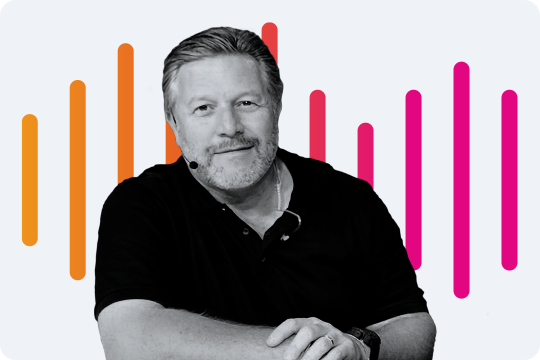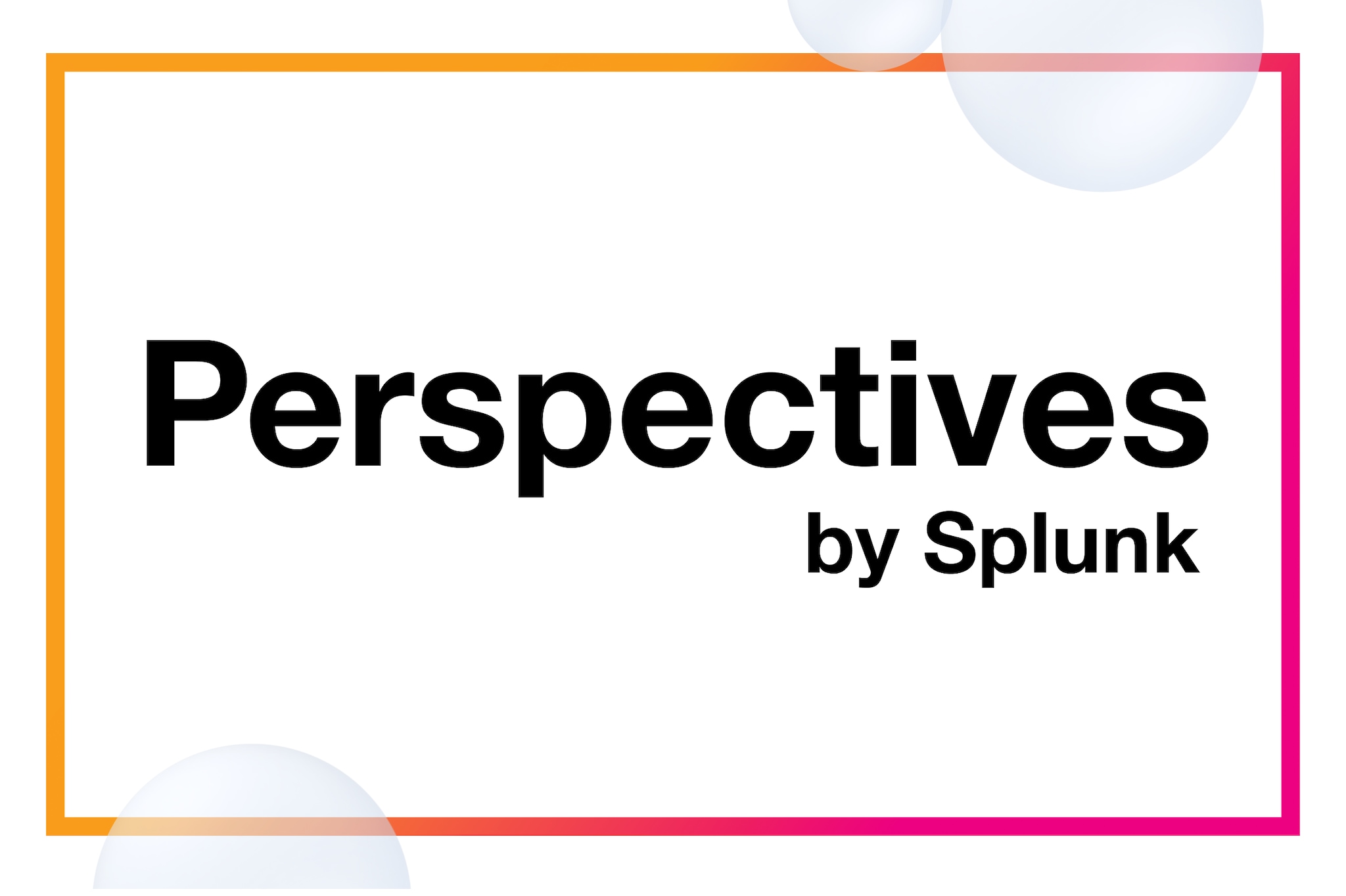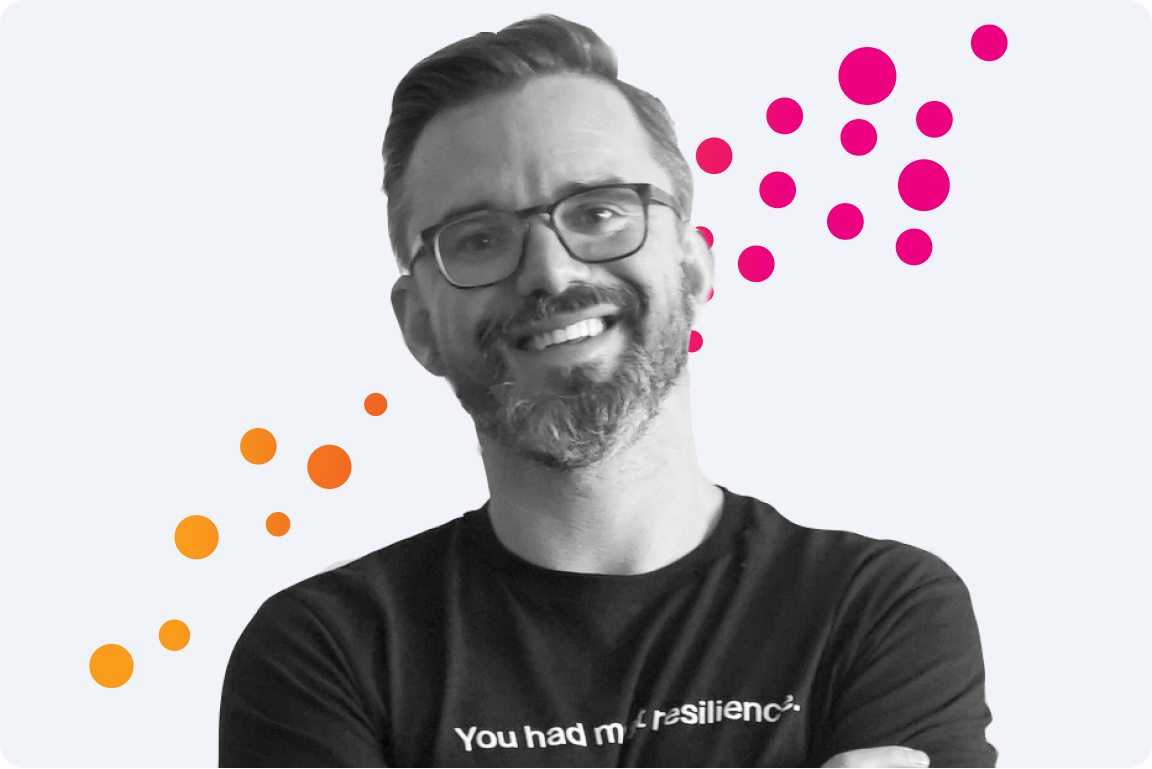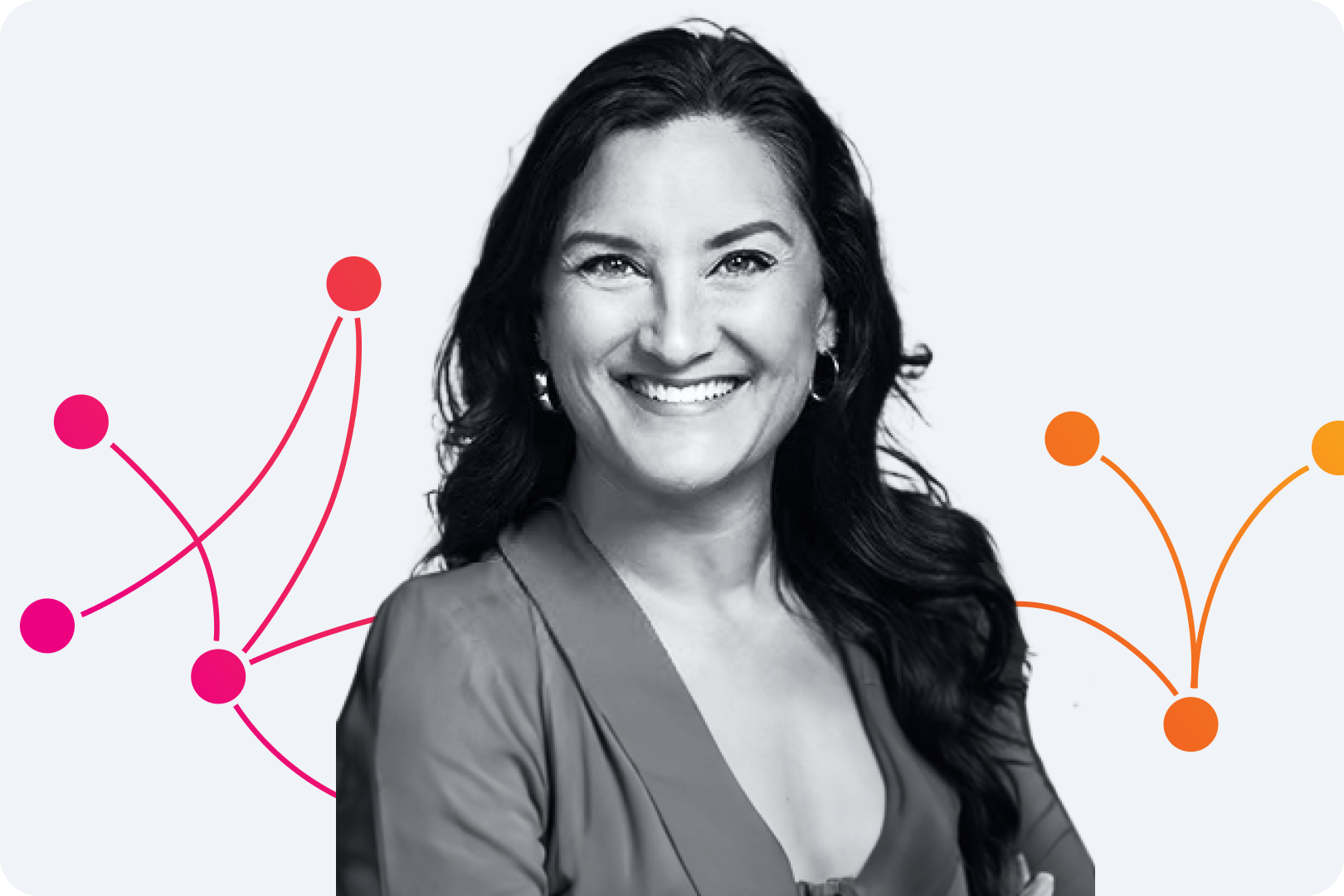Perspectives Home / EXECUTIVE STRATEGY
Racing at the Speed of Data: What It Takes to Win in the World of Formula 1
Data shapes everything from the production line to the pulse-pounding moments on the track.

By Cory Minton, Field CTO
April 18, 2024 • 20 minute watch
- Racing at the Speed of Data: What It Takes to Win in the World of Formula One
- Racing at the Speed of Data: What It Takes to Win in the World of Formula One
- Racing at the Speed of Data: What It Takes to Win in the World of Formula One
- Racing at the Speed of Data: What It Takes to Win in the World of Formula One
What does it take to build and race cars that go more than 200 miles an hour?
In the high-octane world of racing, it's not just the skill of the driver and the top-notch racecar that matter. Data emerges as a secret weapon, shaping everything from the production line to the pulse-pounding moments on the track. Recently, I had the exhilarating opportunity to chat with Zak Brown, the mastermind behind McLaren Racing.
According to Zak, data isn't just important; it's the lifeblood of the business. It's not enough to have a flood of information; you need to harness it, dissect it, and use it to make split-second decisions. "Racing has transformed from relying on gut instinct to being driven by hard data," Zak reveals. "And if you ignore what the data tells you, you're bound to miss the mark."
During our conversation, Zak shares what it's like collaborating with racing phenoms like Lando Norris and Oscar Piastri, as well as the thrilling story behind McLaren's record-breaking pit stop, clocking in at an astonishing 1.80 seconds. And just when I thought the adrenaline couldn't get any higher, Zak drops the bombshell about Brad Pitt portraying him in the upcoming Formula 1 blockbuster.
For more perspectives from security, IT, and engineering leaders delivered straight to your inbox, sign up for our monthly newsletter.

Resilience starts with strategy
Note: This is an auto-generated transcript, which may contain errors.
Cory: Hey, this is Cory Minton, CTO at Splunk and in this edition of the Perspectives Podcast by Splunk, I had the chance to sit down with McLaren Racing, CEO Zak Brown for conversation during the Las Vegas Grand Prix. And I really think you're gonna enjoy the conversation.
Zak: It has been pretty wild. Bright of a year started out the year in a little bit of a rough, it was terrible. Looked up.
Cory: How did you guys turn it around in such dramatic fashions?
Zak: Ultimately, people. So we're in the database as you guys all know something about data and you uh help us in our database and data doesn't lie. You need to be able to interpret it uh correctly. And uh at the second half of last year, I wasn't happy with the development of the car and the car wasn't developing at the pace that I thought it should.
And in our business, probably no different than, than your business. Things feel a certain way as, as CEO you kind of have an instinct and then the results follow. And so sure enough, uh things weren't feeling good and uh we have usually about a 34 month lag before it hits the race car. And uh that our data started saying you’re gonna have a poor start to the year made uh changes of our team principal who’s ultimately responsible for the performance of the team.
Our technical director who’s responsible for the building of the car. So we changed all three, promoted Andrea Stella, who was our racing director, has done an awesome job, and he came in, he did a little bit of restructuring, but really just empowered people gave him a clear direction and, and he’s just a typical great leader, communicator, precise with what he wants, leads by example, knows when to delegate, knows when to jump in. and so we had this weird dynamic that we started the year publicly, terribly 9th, 9th quickest team. But underneath that, we started to see in the data that the development that we were gonna bring Midea was starting to work.
So we had to manage the fan base, which is not easy on social media, manage our partners who are expecting, you know, you, you sign up with mclaren and you're expecting results and then even our employees, but our employees were the first to know that actually we were our way. So we kind of had it keep everyone in a good place for the 1st 78 races until we were able to deploy the upgrades and then once they started working, they started working in a big way fast and furious.
And now uh we're the second quickest car. Um we've had nine podiums, second most amount of podiums by Red Bull. And uh it's been a great journey and, you know, one of our challenges is our results you see at the same time as, as we see. So, you know, maybe unlike a company where, you know, the results, so you can all get around a table and huddle a little bit on how you're going to present those results.
I see him at the same time, hundreds of millions of people see him. So that's uh that can be difficult. But I think uh it's made us stronger as a team. We have a tremendous amount of energy and enthusiasm and confidence now and feel like we're going to go into the off season on a, on a high and lead us into a, a really strong 2024.
Cory: So one of the things you mentioned there, you kind of went down this data path. I want to pull on that one for just a second. You've, you're not new to formula one. You've been in formula one for a number of years. What like 20 plus years?
Zak: I've been around racing 35 years. I've been running mclaren seven years. I've been around formula one for 20 years.
Cory: Fantastic racing driver, by the way, he put down the second fastest time in the racing simulators last year only to be beaten by one of his own employees, a professional e-sports driver. So you feel pretty good.
Zak: That was, that was good fun. I like driving. I like driving.
Cory: So in those years of, you know, sort of evolution, you say data is, you know, critical to your business. How's it changed though? Like how much has changed in the last decade in terms of how data driven this business really is.
Zak: It's all data. So we, we have 300 sensors on the race car. We pull down 1.5 terabytes of data. A weekend, we run 50 million simulations and the best to worst in our industry is about 3%. When you think about most industries, the swing from best to worst is to be 300%. So uh our margins we're working on are very small. And this is where Splunk helps us. It's one thing to get a bunch of data.
But how do you amalgamate? How do you go through it? How do you go through it quickly? We will uh on pit wall, we're constantly leaning into data to make decisions that are sometimes literally split second. Safety car will come out.
We know if we're gonna make a tire change, we have 18 seconds before the drivers coming in and safety car might come out. We have two seconds to make a decision. So, uh in the good old days, you get all this data in, but you still have to kind of go through it. Now. We're able to amalgamate it, review it, understand. And we got all these different data streams coming in uh A as well.
So what's interesting is you havebeen racing, what's called racer instinct, which is no different than business instinct. And when I'm on pit wall, um everyone's looking at different elements of, of data. Uh And I'm personally a bit more just looking strategically at the race and I would say 95 out of 100 times, if my racer instinct today disagrees with the decision they're making, I'm wrong because they're looking at data.
And I'm and so racing's evolved from kind of racer instinct to data driven decisions and you gotta trust the data and every time you kind of go against the data, you're usually wrong.
Cory: What's by the way, if you're also not aware, there's a upcoming formula one movie coming out, I think next year. And I think you're being played by Brad Pitt.
Zak: He's gonna cut his hair a little bit.
Cory: So you're coming off of a couple of like pretty challenging stints in terms of weekends. You got double triple headers. This race is kind of unprecedented in the sense of its timing and sort of when things are happening. How do you be, you prepare the team for something like that because here, like, in your stage it's, has to be an incredible challenge.
Zak: So you have different people with different roles, right. The drivers get into the right time zones. So, they're asleep right now. They were asleep at probably six o'clock in the morning. They'll sleep until 230. Um, you know, uh, sleep, uh, food conditioning, critically and same thing with the racing team. The pit crews, you know, they're, they're athletes are trying to, you know, we just broke the record for the fastest ever pit stop 1.8 seconds. So they're all athletes.
So the people touching the car, they need a train and sleep and eat just like the drivers. I torture myself a bit more because I'm not touching the race car. So I'm just kind of, I'm just going on at 200 miles a day. No. Exactly. I'm notgonna hurt anyone if I make a, make a mistake or don't get a wheel, not on. So I'll just sleep on the plane on Sunday. So it's, it's hard. We're all used to it. We live in different time zones. I, I try and when I get on a plane try and immediately get in the time zone of where I'm going. So if that's go to sleep right away, it goes, if it's don't go to sleep right away, but it can be hard because you might want to go to sleep because wherever you are, you're tired and as soon as the plane fires, fires up, I tend to go go to sleep.
So just trying to kind of get your body uh in, in sync with this is hard because even last night, we went three hours, four hours later than we were planning on. Uh So I was effectively asleep on that wall and I didn't want to adjust my, my morning in this race, in particular, I'm living at about 15-30 minute increments. Uh The only time I get peace and quiet is on the bare wall, which is why it's your right. Yeah, you know, I get on a bit wall and it's like, all right, I've got an hour to kind of catchup on things. So this year got one race after this after Las Vegas go to Abu Dhabi.
Cory: Hopefully Abu Dhabi fits the mclaren sort of streets to some higher speed terms.
Zak: I think it will.
Cory: But your, your, your team's already well into the thinking about next year. You've made some investments in things like a wind tunnel. Um How did those kinds of strategic investmentschange your trajectory, you think in terms of development?
Zak: Uh So we've invested in four or five major areas. Uh a new wind tunnel which is on online. We have a new state of the art simulator, uh which will help give the driver a better feel to give us better feedback. We uh have a new manufacturing facility to be more efficient in our manufacturing uh to produce materials quicker and then a new uh CFD uh cluster uh that was, that was put in by uh Dell and, and those areas will all help us uh have better technology, move faster, produce more and produce it uh more accurately.
All that is in place.
Now, we have two new big hires coming, the chief designer of Red Bull who was there 17 years. And then uh David Sanchez, who came from Ferrari, who the last two times, there's been a new rule change, significant rule change, Ferrari's come out of the gate strongest and he's been the individual who's led that. So all our technologies in place, we have all these great people and a couple very senior that'll just be additive to what we already have. And 24 started in June. We didn't have everything in place, including a couple of the individuals. So 24 we will start the year with everything we have, but 24 started six months ago. So it'll be 25 where we've got everything in place in place and utilized.
We have everything in place come January 2nd, but January 2nd started six months ago, but we should be fine. I mean, we're, we're, we're not using that as an excuse. That's just kind of, we know we've got more horsepower coming.
Cory: So you, you talked about some of these great hires. You've made some of the best hire I would argue right now. Oscar Piastri. What's it like having two drivers like that are both, you know, Lando's obviously a few years into it but young vivacious, like, thought to be a, a world champion very soon.
Zak: I think alongside, I think we have the two best drivers in, in form, formula one, the best driver lineup because you've got, uh Lando who just turned 24. So he's experienced, very young and Oscar who's 22 it's also younger and his first year. And so I think we've got, they get along great.
Uh It'll be difficult to manage as a pairing at some point as we get closer to the, the front because they're gonna, you know, your teammates, the first driver you want to be right now, they know the best way for us to get to the front is for them to work together. Um, but managing two drivers equally is, is, is hard. You can see, you know, it's no different than, uh, you know, two alpha dogs at the park. You can see they're about ready to fight before they fight. You can either sit there and watch or, you know, throw a bone and distract them and that's what, you know, we're gonna need to do with these two guys.
Cory: So the folks here, most of them will in the paddock with us this weekend. Uh We'll see tons of folks in Vaya running around the, the amount of staff that it takes, I mean, 18 people overall for a pit stop, but we're not even seeing half of it. So there's a ton of folks back at the MTC. What kind of roles like, what's their role in this? Because we don't, we talk about back at the factory like we clearly understand they produce things. But on race day, what's it like at the M PC?
Zak: Yeah. So we have 1200 people within the, the racing team. Uh About 750 of those are uh directly on the racing team. The other is, you know, we've got an Indar team, extreme ef you know, finance hr marketing, et cetera, but 750 people on the racing team, we'll have about 50 people back at the factory in what's called mission control. No different than what you'd expect to see out of a, you know, NASA, which is where all the data is coming in, obviously at the track as well. But it's a cool, calm, quiet environment where you could hear a pin drop and everything's broken down by expertsin their field. So it'll be data around reliability, data, around weather data, around competitive analysis, data around our arrow, et cetera.
And they're getting that information and ultimately feeding it up through the food chain. And it's the person with the highest level of knowledge of that particular area that calls the final shots and then that ultimately gets kind of fed up into uh the garage and then ultimately goes to, to Pit Wall and we'll have about 20 different channels and it sounds like air traffic control. And you got, it's amazinghow you could over time, hear 20 things going on, but you can actually hear them all individually and you can dial up and dial down what's, what's important, but all that information's coming in to make split second decisions. That's wild.
Cory: So we're a couple of years into this ground effect era where we've changed the arrow of the cars, we're gonna have some changes, I'm guessing in the next couple of years. What do you think is the biggest technological innovation that's gonna happen in formula one that's gonna make it feel different in three years.
Zak: Um Usually in formula one, it's all about kind of incremental gains. So there won't be this aha moment where it just looks radically different. Clearly. A I is gonna have AAA big role. It, it already is starting to have a big role, but you got to train A I and formula one's pretty unique. Um But I think A I is gonna uh my view is it'll create more productivity. I know there's some people that go, it's gonna be job losses. My, my view is the more you can lean into technology, the more output you get. So I don't see it as replacing I see it as turbo charging. Uh what we do, we can make quicker decisions, we can be more productive and get kind of more through the more horsepower uh put on the, the ground, so to speak. So I think A I has to be from a technology standpoint, uh especially as you have all this data data coming in.
Cory: All right. So this weekend, your team's here. Well, well, what do you think the game is gonna look like for you?
Zak: I think this could be a tougher weekend for us, unfortunately, than the last six. You know, we've had five podiums in the last six races. Our car's weakness is slow speed corners which this has, we're average on long straights, which this has, we're strong in cold environments because we do a good job of turning on our tires. That'll be a strength. So I think we'll, I don't think based on yesterday, we're, we're faster than we looked yesterday. I think the Aston was turned up. Uh, you know, you can turn the engines up and down sometime. We, we, you, you take a lot of life out of the engine, so we don't like to kind of show our hand on Friday. So, um, I don't think we'll be the second quickest team. I think we'll be more around the fourth quickest team and we're in a big fight with Aston, so we need to deliver this weekend. So I think it'll be, I think it'll be ok. I think we'll be in Q three but it won't be, uh, pole like we had in Brazil last race.
Cory: Well, Zach is going to give a good share insights. I'll ask you one last thing. Is there anything that we should be watching for this weekend when we're out of the track? Like your favorite thing, if you're like inside ball, what should we be looking for?
Zak: Well, I think it'll be a one stop race, so I'd be looking for that unless they're safety cars. Street races do tend to bring out safety cars. So then strategy is kind of changes uh immediately. So if it's a clean race, it'll be one stop. I'm predicting it won't be a, a clean race and then that'll make it exciting because then that means we all need to get our data and think on our toes quickly. Um Being cold will be uh interesting and, uh, yeah, I mean, the, it's gonna be a spectacular show. I'm excited to see what the show is gonna look like. Uh, you know, it'll definitely be Super Bowl halftimelike which I think will be, uh, I think it will be pretty cool.
Cory: Yeah, this is on track. I'll say like there's a lot of race tracks around the road. I like you just cannot be the view out of this place out of the back of the paddock, seeing all that in one skylight. It is sunny and to hear those cars going there on the track with that in the background and it's gonna be cool.
Cory: At this point we opened it up to questions for those folks that were in the room. And the first question was, what decisions do you Zach actually get to make during race day?
Zak: So three decisions uh potentially come up to me. Uh One, our engine provider, Mercedes, if they see data that says the engine's not gonna make it they can tell us to pull in, I could override. That decision will be driver swaps drive that can become political. Why'd you favor him? And usually it's because they're on differen stra uh strategies. So if we fee that that's gonna be a bit dicey, they'll, they'll check in with me and then the last would be safety if they see something that they feel, you know, should we pull the driver in? We had that with uh Lando in Montreal a few years ago. Uh we saw some temperature and his brakes melted and he ended up having a suspension failure. So if there's something that is safety related, um then that'll come up to me to make, make the decision. Otherwise I will communicate with Andrea on a private channel if I see something and have a view, but I'll step back for making the decisions because every single time in my own mind that I've disagreed, I've been wrong. So I've, I've learned to kind of trust the data and know that I'm, I'm working from limited knowledge.
This next question was related to the world record pit stop that had been set just a few weeks before by mclaren. And we asked Zach, how did they do it?
Zak: So it was interesting, you know, first thing you want to do is congratulate the pit crew. And Andre did this very eloquently at our, at our broad team debrief, but the big crew has to have great equipment. It's not just physically, how quickly can you get it on the race car. Then the pit crew is trained by a performance coach, both mental and physical because you can imagine the pressure physically mentally that, you know, here's this car coming in at 60 miles an hour, the whole world is watching and if you screw up that left rear wheel, that's a, you're letting the whole, the whole team down. So there's a physical uh mental element which is where our doctors are uh coming to play our physical trainers. Then our commercial team helps us bring in sponsorship.
We work with our finance department who helps work with us to define where should we spend our money. So you actually kind of go. It's not just about the 18 people. It's, it's the most obvious, it's what you see on TV. But like in any business, everything's inter uh connected. Then from a data standpoint, we'll do AAA lot of reviewing of angle of the car to come in, angle of the guns, how quickly to move, who moves first and do a lot of video chore, uh choreographic uh to, to see what's the most official way to make the changes. So, it, they're quite sophisticated, these, these pit stops that uh it's out of the naked eye. It's more just. Wow. Look how quickly he got that wheel on. But there was a lot that went into, in, into that dance.
Cory: Be sure to subscribe to the show on whatever platform you're currently using. If you're listening and you want to watch the show, check out youtube and if you're watching but you prefer to listen, check out the perspectives podcasts, wherever you find your podcasts.
Speaking of podcasts, you should also check out The Security Detail podcast by Audrey Streetman and Kirsty Payne. They explore cyber threats across a variety of industries with some of the most trusted names in cybersecurity and don't forget to check out Perspectives for blogs featuring the latest executive takes on today's security and technology topics by leaders and four leaders. Thanks for listening.
Related content
February 29, 2024
Driving a Culture of Agility and Curiosity: Strategic Approaches From McLaren F1’s COO
NOVEMBER 8, 2023





